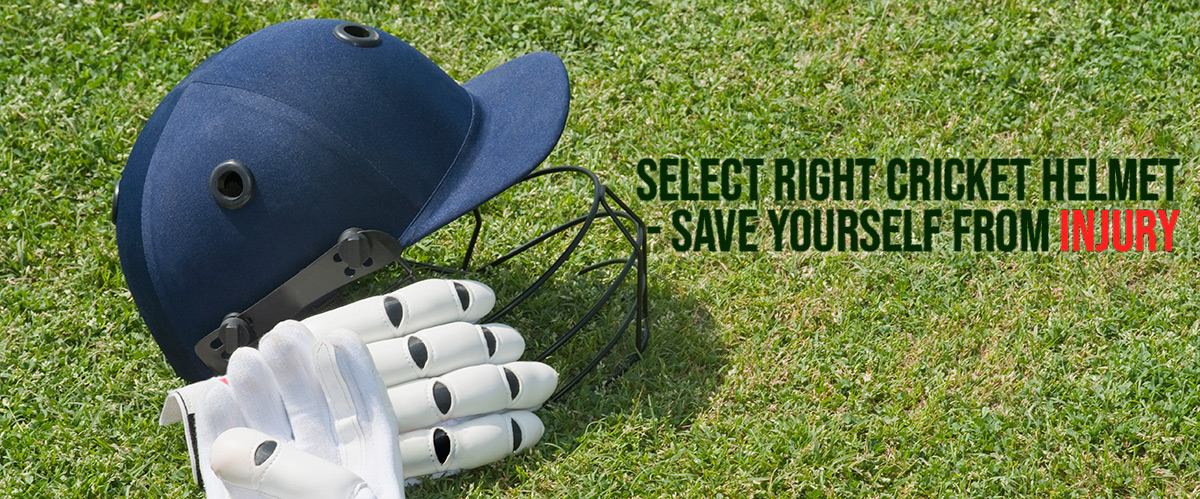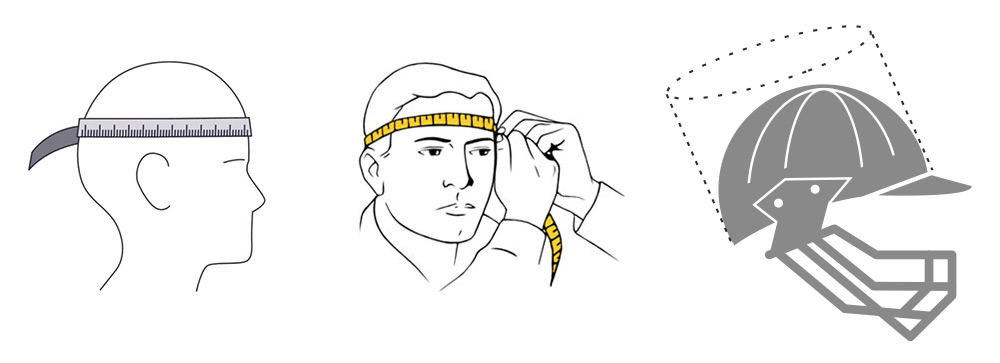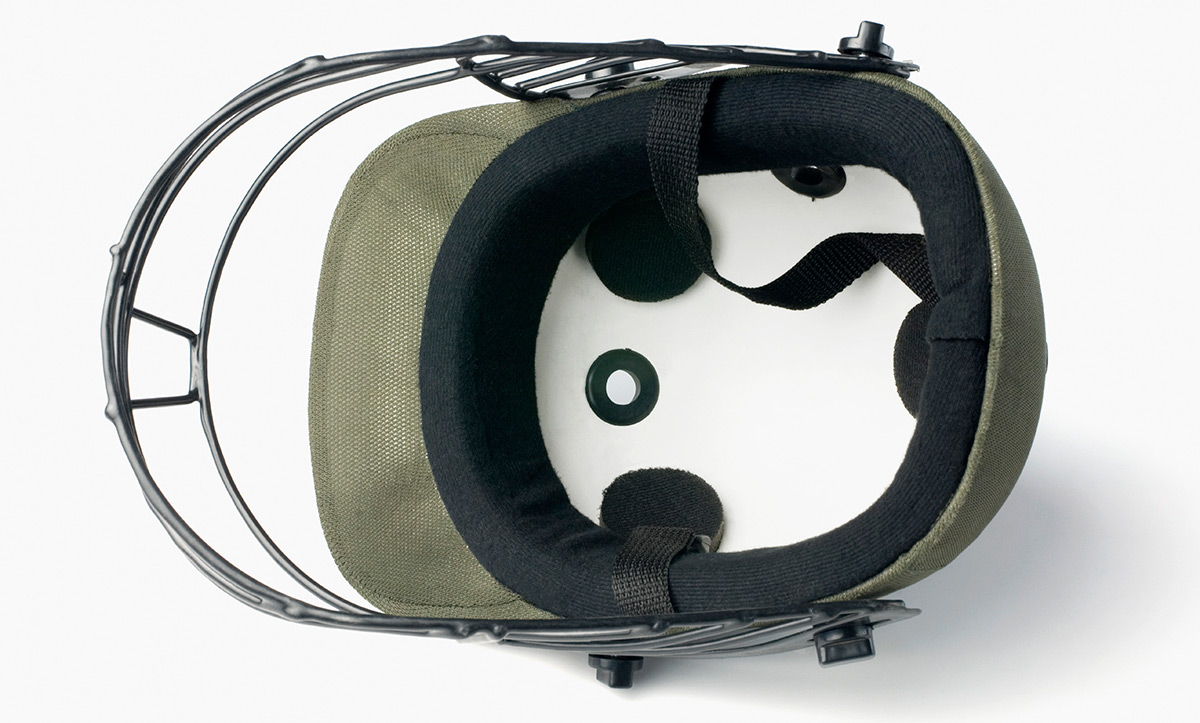
If you are getting ready to play cricket, there are some things that you cannot forget, and selecting the right cricket helmet is the most important one of them all.
The helmet may be the most important invention in the history of cricket. There was a time when scarily fast bowlers used to terrorize batsmen with their pace and bounce in the 70s and 80s. And who can forget the "Make them Grovel" series between the English and the West Indians when the former made the four horsemen of the West Indian team angry.
West Indies not only won the series comprehensively, but they left the English players traumatized. The West Indian bowlers seriously injured several English players while sent many to the hospital. Hence, the introduction of helmets was a long time coming.
The concept of cricket helmets was around from the 1930s, but the first helmet didn't arrive till 17 March 1978 mainly because batsmen were not too fond of wearing a helmet. Moreover, most cricketers from the early era considered cricket helmet obstructs their vision and diminishes their batting prowess.
Nevertheless, nowadays, head protectors have become one of the most crucial protective gear in cricket. You can bat without wearing any other protective equipment, but without a helmet, a hit on your head by a fast bowler, and your career is over. Furthermore, helmets play an essential part in the process of wicket-keeping too.
Like batsmen, wicketkeepers cannot ignore the helmets. Their lives depend on them because wicket-keeping is the fielding position with the highest chances of getting injured by a ball or the wicket bails. It is evident to understand how essential helmets in cricket.
However, finding the right cricket helmet can be tricky, considering wearing something on your head when batting can be very distracting. You have to find the right size, the right weight, and a helmet without flaws. Moreover, the quality should be perfect because you will be facing fast bowlers who will try to hit you on the head, or you will be keeping-wickets where accidents can happen anytime.
Hence, Sportuncle has bought a detailed guide that will help you find the right cricket helmet.
How to select the right cricket helmet?
Pick a material
The outer material of a helmet should be lightweight but heavy-duty at the same time to easily sustain quick deliveries. In contrast, the inner material should be soft and comfortable to affect the player's concentration.
Usually, cricket helmets are manufactured either with Carbon fiber or fiberglass because both are long-lasting and strong. There is a slight difference in terms of weight in both the materials. Fiberglass is on the heavy side and is not suitable for long matches, while the Carbon Fiber is lighter. And when the former is mixed with Kevlar, it offers enough strength without being too heavy.
Besides fiberglass and Carbon fiber, two other materials are used for making head protectors- Steel, Titanium. Steel provides strength, but it is cumbersome, Titanium, on the other hand, is light. However, you shouldn't go for a metal helmet if you are not on a tight budget. Always go for either Carbon Fiber or Fiberglass.
While going through the helmets' inner and outer material, don't forget to check their grill material. Generally, grills are made up of titanium or stainless steel. The former is more widely accepted because titanium grills are more durable and offer better strength than stainless steel grills.
Once you are done deciding the material, its time for you to find the right size.
Sizing
Just like cricket gloves, the size of helmets varies from manufacturer to manufacturer. Hence we, have compiled a list of dimensions of helmets from different brands according to the age category.
Brand | Size | Head Circumference |
Gray Nicolls | 2XS | 51 - 52 cm |
Gray Nicolls | XS | 53 - 54 cm |
Gray Nicolls | Small | 55 - 56 cm |
Gray Nicolls | Medium | 57 - 58 cm |
Gray Nicolls | Large | 58 - 60 cm |
Kookaburra | Junior | 56 - 58 cm |
Kookaburra | Adult | 58 - 62 cm |
Masuri | Junior Small | 51 - 54 cm |
Masuri | Youths | 54 - 57 cm |
Masuri | Small Mens | 55 - 58 cm |
Masuri | Mens | 58 - 61 cm |
Masuri | Large Mens | 61 - 64 cm |
Shrey | Small Mens | 54 - 57 cm |
Shrey | Standard | 58 - 61 cm |
Shrey | Extra Large | 60 - 63 cm |
If you don't know which size will fit you perfectly, measure your head with an inch tape. You can do it by keeping an end of inch tape in the middle of your forehead, right above the eyebrow, and then completing a full circle by wrapping it around your head. Stop when you reach the center of your forehead. Just like that, you will know your size.

Other then the things mentioned above, you should also consider the following things while buying a cricket helmet:
- Playing Level: If you are an entry-level player, you won't need an expensive helmet. Hence, keeping your playing level in mind will help you not only to buy a helmet but also while purchasing a bat and cricket shoes.
- Helmet Strap: People often get so immersed in checking the helmet's outer and inner material that they don't remember to check its strap's quality. Pay special attention to the quality of the belt and the locking mechanism.
By following the above steps, you will discover the perfect helmet. So, now you know the right process to buy the best helmet, but do you know you can still get injured even after wearing a helmet. The most common one is the concussion. Hence, you should be mentally adamant and ready for everything while playing cricket.
We have dedicated the next section to the injuries you might face even with a helmet, so you are prepared for everything.
Which injuries can't be avoided even after wearing a helmet?
There is no denying the fact that head protectors have made the game of cricket less dangerous. Still, even after wearing them, batsmen are prone to injuries. Moreover, there are many incidents where wicket-keeper's standing close to the stump were injured even after wearing a helmet.
The career of South African wicketkeeper Mark Boucher was cut short after sustaining an eye injury while keeping. Hence it is evident, even helmets cannot guarantee a hundred percent safety, and players can still get injured.
Here are some of the common injuries that players are susceptible to even with a helmet.
Concussion
A concussion is a brain injury caused by a severe blow to the head, in cricket by a quick cricket ball, resulting in temporary loss of brain functions. After-effects of concussion can range from headaches, nausea, and dizziness to loss of concentration, confusion, and memory loss.
If a batsman suffers a severe hit and develops a concussion, there is no specific cure. That said, proper rest and restricting activities can help the brain to recover fast. Plus, medicines can be used to treat symptoms like headaches and nausea.
Facial Lacerations
A facial laceration is cuts or tears to the face caused when a blunt or penetrating object stuck somebody. In cricket, when the leather ball hits a particular area of the face, it usually results in Facial Lacerations.
To reduce the impact of shocks and other injures, significant steps are being taken. Recently, ICC (International Cricket Council) added a new concussion substitute rule, allowing man-to-man replacement of a player hit on the head by a cricket ball. Steve Smith was the first batsman to be replaced by this rule after being hit on the head by Jofra Archer.
Hence, it is obvious; players can still face injuries even after wearing high-quality helmets You can now imagine what kind of damage a cricketer might sustain if he uses a faulty helmet. Thus, it would be best if you never used a defective helmet; wearing a defective helmet is as good as not wearing a helmet. Here are some injuries that had happened in the past when people were wearing the wrong helmets.

Injuries due to faulty helmets
Who can forget the deadly incident during a domestic match in Australia when Sean Abbott's delivery hit Philip Hughes at the back of the head, resulting in sudden death? That was the outcome of a helmet without the back-head protection. In other words, it was the result of a faulty head protector.
Further, a head protector without a proper gap between the grill can cause grave injuries, and there is enough evidence to support that. A cricket ball passed through the grill and fractured the eye socket of Daniel Flynn of New Zealand, and Stuart Broad's nose was broken by a ball that again passed through the grill.
Therefore, to reduce the risk of injuries due to faulty helmets, ICC (International Cricket Council) has set some standards and defined some tests. Below are the critical aspects of the rules and criteria established by the ICC.
Standards and Tests set by ICC
- All helmets have to be manufactured as per the new British Standard (BSI)- BS7928:2013.
- Head protectors should pass the facial contact projectile test, which is done for standardizing the faceguard so that no ball can penetrate through it.
- All helmets should pass the head protect test. In which the head protectors are tested against different cricket balls. To be specific, a five and a half-ounce ball and a four and three quarter ounce ball are used for testing.
Pay special attention to these standards while purchasing a new helmet. Helmets that have been tested according to guidelines of ICC will have a label stating the same. Thus, only use those head protectors, which are labeled clearly.
Conclusion
Cricket is a game of uncertainties; anything can happen at any time. Any team can win a match from any situation, and any player can get injured at any moment. You cannot do anything to control the outcome of a game. Still, you can most certainly avoid injuries by buying the right equipment and taking good care of your cricket shoes, maintaining your cricket gloves, persevering your helmet, and more.
Your email address cannot be published. Required fields are marked*

 My Account
My Account Track Order
Track Order Sports Guide
Sports Guide

No comments